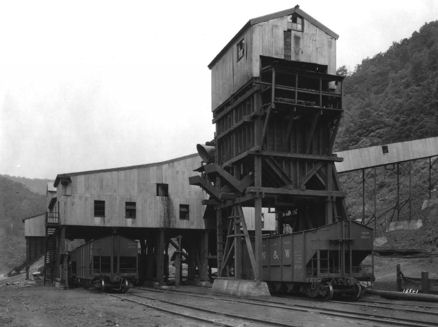
The Battle of Matewan
The Battle of Matewan occurred on May 19, 1920 in Matewan, a small town in West Virginia that lies along the Tug River that divides Kentucky and West Virginia. Mining and the coal industry dominated the lives of citizens in West Virginia. By 1900, coal became West Virginia's leading industry. The powerful coal companies controlled the lives of the miners. The coal companies owned the miners homes,required the miners to be patrons of the company stores. The coal companies also had significant influence with politicians, newspapers and the school system. Coal companies controlled many aspects of life in Matewan.
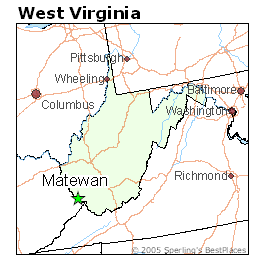
The miners worked long and hard hours while earning lower wages than they thought they deserved. There was a large wave of immigration in West Virginia in the late 1800's and early 1900's. Many workers from European countries, especially Italy, Hungary, and Poland worked in the mines.
There was labor unrest throughout the country and this developed many labor disputes. Much of the labor unrest was attributed to the transition from the country being a wartime economy to being a peacetime economy, the lack of jobs for soldiers that came back from the war, and the effects of the Bolshevik Revolution and Socialist Party.
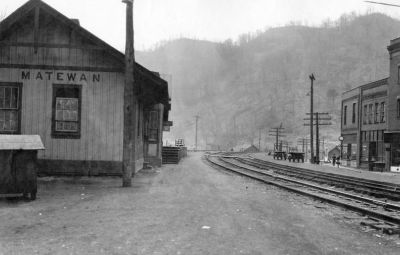
The country was a wartime economy during the war and now that the war ended, the country had to make the transition to a peacetime economy. There was the demobilization of armed forces and war industries. Also, the sudden cancellation of war contracts left workers and business leaders in a difficult plight to deal with the transition on their own.
General labor unrest worsened the conflicts of postwar readjustment. Prices were rising, discontented workers (released from wartime constraints) were more willing to strike for their demands. There were many strikes at the time. In 1919, over four million workers striked. Some in the East won but in Seattle, the mayor said the walkout of 60,000 workers was evidence of Bolshevik influence.

Miner's tents in Matewan, WV
Public alarm over the event hurt the purpose of unions throughout the US. Also, an AFL campaign to organize steelworkers had charges of radicalism against William Z. Foster, its leader, who joined the Socialists in 1900 and became a Communist later. Attention to Foster's radicalism made the public aware of the common 12 hour day and seven day week of the steelworkers. In 1919, 340,000 steelworkers walked out, but the union gave up the strike four mounths later. Public opinion favored the workers when they knew about working conditions, but the strike was already over.

In the same year, the majority of the Boston police had a strike. Governor Calvin Coolidge used the National Guard to maintain order. Four days later, the strikers were ready to return but the police commissioner refused to take them back. Coolidge responded to Samuel Gompers' appeal for reinstatement by claiming, "There is no right to strike against the public safety by anybody, anywhere, any time."

To add to the labor unrest, southern blacks came north to take mining jobs and Italian "scabs" also took mining jobs away from soldiers who expected to have their jobs back when they returned home. The "Bolshevik menace" was a big contributor to labor unrest. Many Americans linked the "Bolshevik menace" to the labor unrest and mob violence. Many Americans feared that the US might fall to Communism.
After the strikes, such as a strike in Seattle, the nationwide steelworkers' strike, and the Boston police strike, many Americans blamed the unrest on the radical immigrants since many strikers recently immigrated from Southern and Eastern Europe. Many blamed the labor strikes and race riots on the Bolsheviks and some radicals believed that domestic troubles in America, similar to that in Russia, was a part of a world revolution.

Left-wing members of the Socialist party created the Communist and the Communist Labor parties. Many bombs arrived in post offices and other violence persisted at the time. Also, there were police raids and many radicals were being deported by the order of the Justice Department in 1919. The Bolshevik scares left a stigma on labor unions and added to the anti-union open-shop campaign ("American Plan"). Racism and xenophobia reached great heights. Socialism was popular in the areas where there were many immigrants. The flow of immigrants from Southern and Eastern Europe rose after the war and in 1921, the Emergency Immigration Act was passed to reduce immigration. There were also some disputes about inadequate wages, long hours, and poor working conditions.
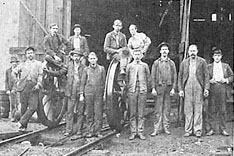
The disputes have led to violence on several occasions. The miners joined in a union after hearing about success of miners in other parts of the country. The Matewan miners heard about other miners who went on a two month long strike and won a 27% pay increase. Under John L. Lewis as the president of the United Mine Workers of America (UMWA), more miners were joining the union. Another contributor to unrest in Matewan was the monopoly of the coal companies on Matewan. Instead of being a capitalistic system, the coal companies dominated the town and every aspect of the miners' lives. Miners wanted to emancipate themselves from the monopoly of the coal companies and joined the union. Miners joined the union with the risk of losing their homes and jobs. The companies responded by using Baldwin-Felts detectives to evict miners and their families from the company-owned homes. The Baldwin-Felts detectives arrived on May 19, 1920 and evicted six families and stacked their belongings outside the homes. Many people heard about the evictions and became furious. They rushed into town with guns to confront the detectives.

The mayor, Cabel Testerman, and police chief, Sid Hatfield, sided with the miners. Hatfield attempted to arrest Al Felts for evicting miners without Matewan authority. The miners and detectives faced each other. It is unknown who fired the first shot, but someone started firing and then the melee broke out. There were several deaths; seven detectives were killed, including Al and Lee Felts and two miners were killed in the battle. Also, Matewan’s mayor Cabel Testerman got shot and was dying. Angry miners followed the Battle of Matewan with events such as the march to Logan County. Hatfield eventually died 15 months later when the Baldwin-Felts detectives killed him at the McDowell county courthouse. In August 1921, approximately 5,000 miners, still angry, gathered for a protest march to Logan County. Between 1,200 and 1,300 state police, deputy sheriffs, armed guards, and others stopped the marchers at Blair Mountain, near the Boone-Logan county line. A battle went on for four days. At Governor Ephraim Morgan's request, 2,100 federal troops to Blair Mountain to stop the event. A group of planes flew over to survey the event. To be prepared, reinforcement of Federal forces came back including a chemical warfare unit and a bomber and fighter planes. The miners eventually surrendered. About 543 people were indicted on charges, including murder, treason, and carrying guns. Union membership plummeted after 1921.
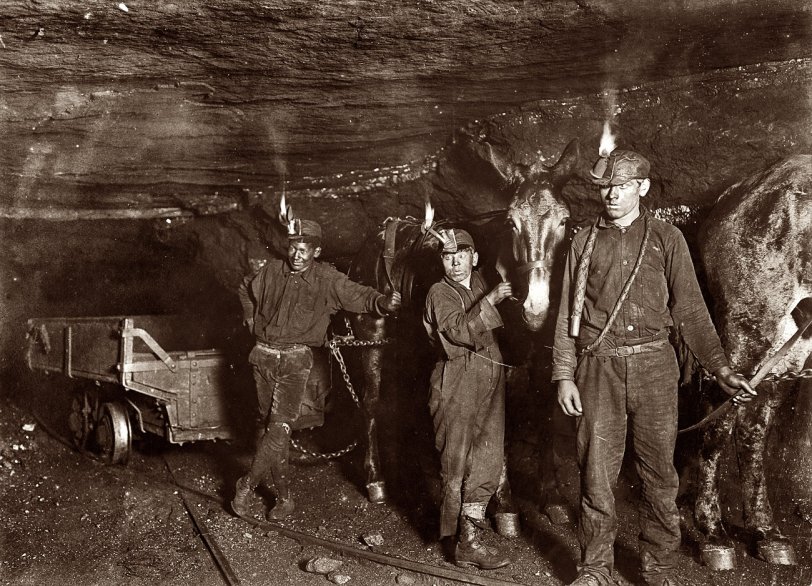
The Battle of Matewan led to the National Industrial Recovery Act (NIRA) of 1933, which established the right to bargain collectively. The NIRA was eventually replaced by the Wagner Act that established minimum wages, shortened workdays, and improved working conditions.
“The time has come to see Matewan in perspective, the way we do Lexington and Gettysburg --- not just as an isolated incident of the tragic spilling of blood, but as a symbolic moment in a larger, broader and continuing historical struggle --- in the words of Mingo county miner J.B. Wiggins, the “struggle for freedom and liberty.” –historian David A. Corbin
[http://www.montgomerycollege.edu/Departments/hpolscrv/knowlandl.html]
[http://www.montgomerycollege.edu/Departments/hpolscrv/knowlandl.html]
Hookup the iPhone to it's plug and then press the recover key.
ReplyDeleteTo soft-reset the iphone you have to do these. This phone does
not include an expandable memory slot, when compared to other
Android devices.
Review my site: cydia download (samsungsoccer.com)
One of my individual favorite features on my Android is the customizable house screen. Most of
ReplyDeletethe packages provided by cydia are totally free.
Step ten: Greenpois0n ought to immediately detect your iPod
to be in DFU mode.
Here is my web site :: nf.ch-sakura.jp (graveyardchicago.blogspot.ru)
ReplyDeletehi i am very happy to visit your blog and i hope publish it
شركة كشف تسربات بالرياض
شركة كشف تسربات الغاز بالرياض
شركة نقل اثاث خارج الرياض
شركة تسليك مجاري بالرياض
شركة رش شمال الرياض
شركة تنظيف كنب بالرياض
شركة مكافحة حشرات الرياض
تسليك مجاري المطبخ
كشف تسربات الغاز
شركة تنظيف كنب بالرياض
كشف التسربات
شركة مكافحة صراصير الرياض